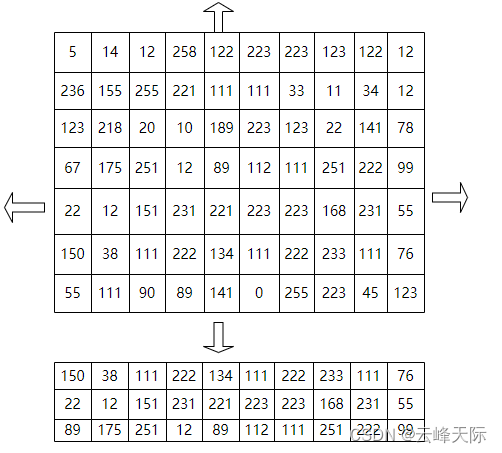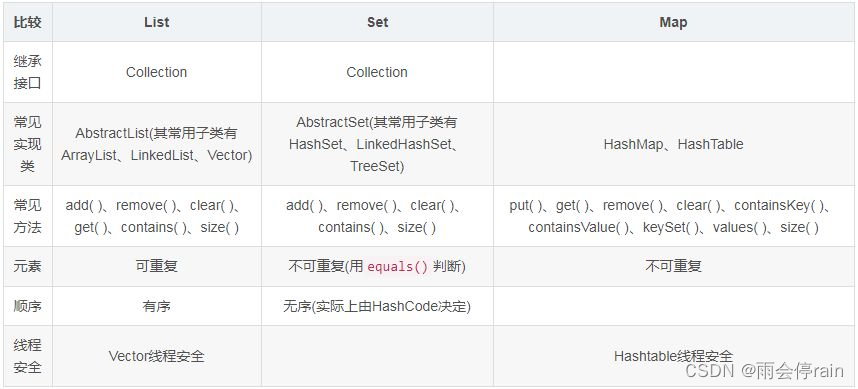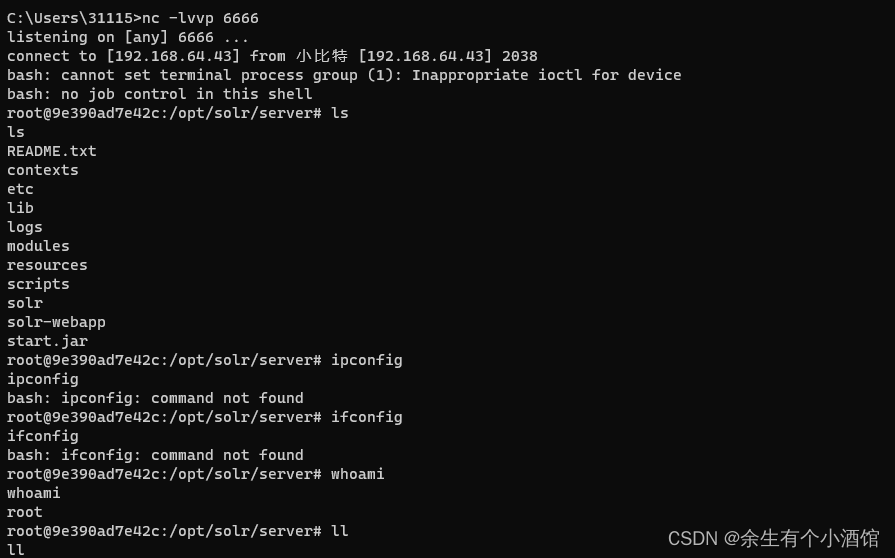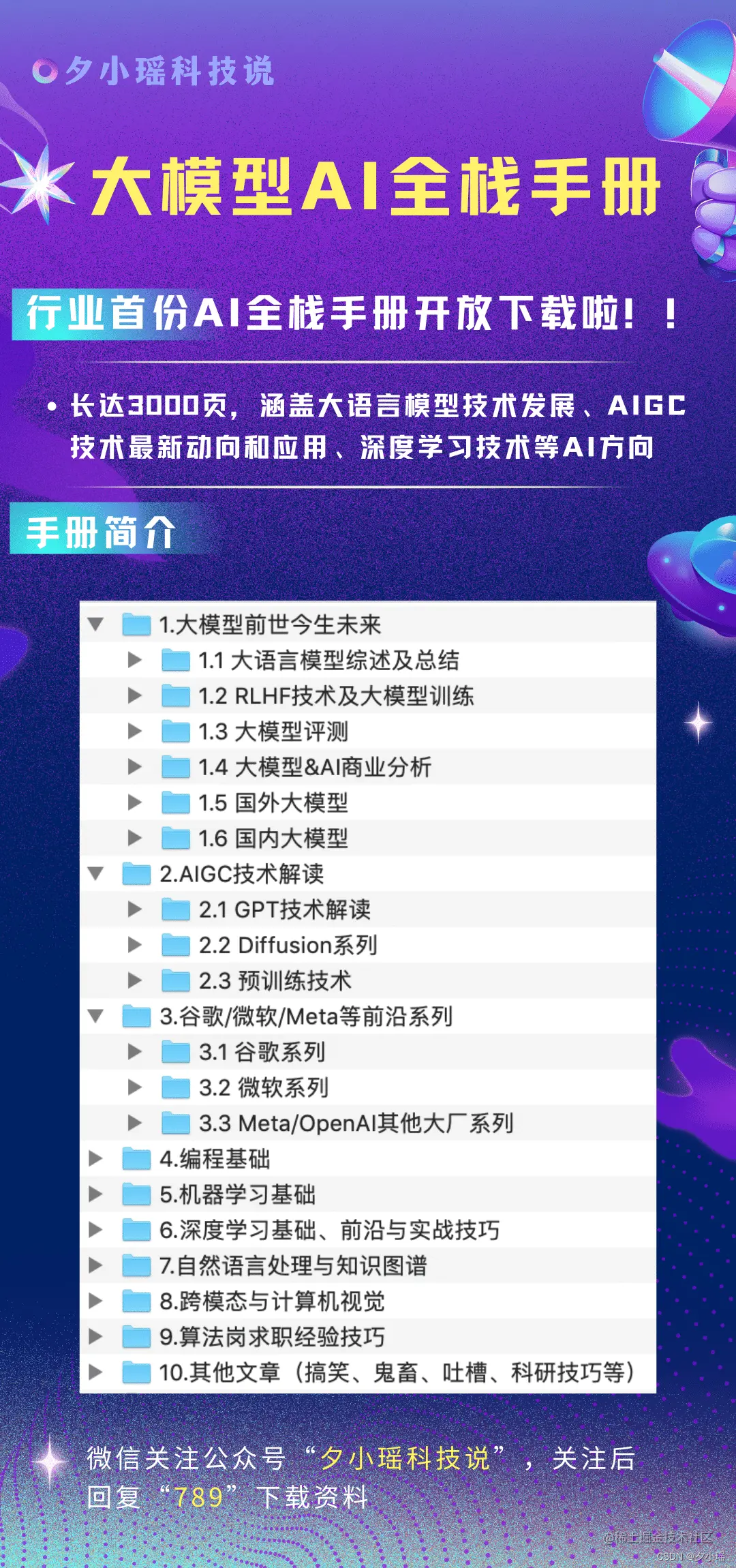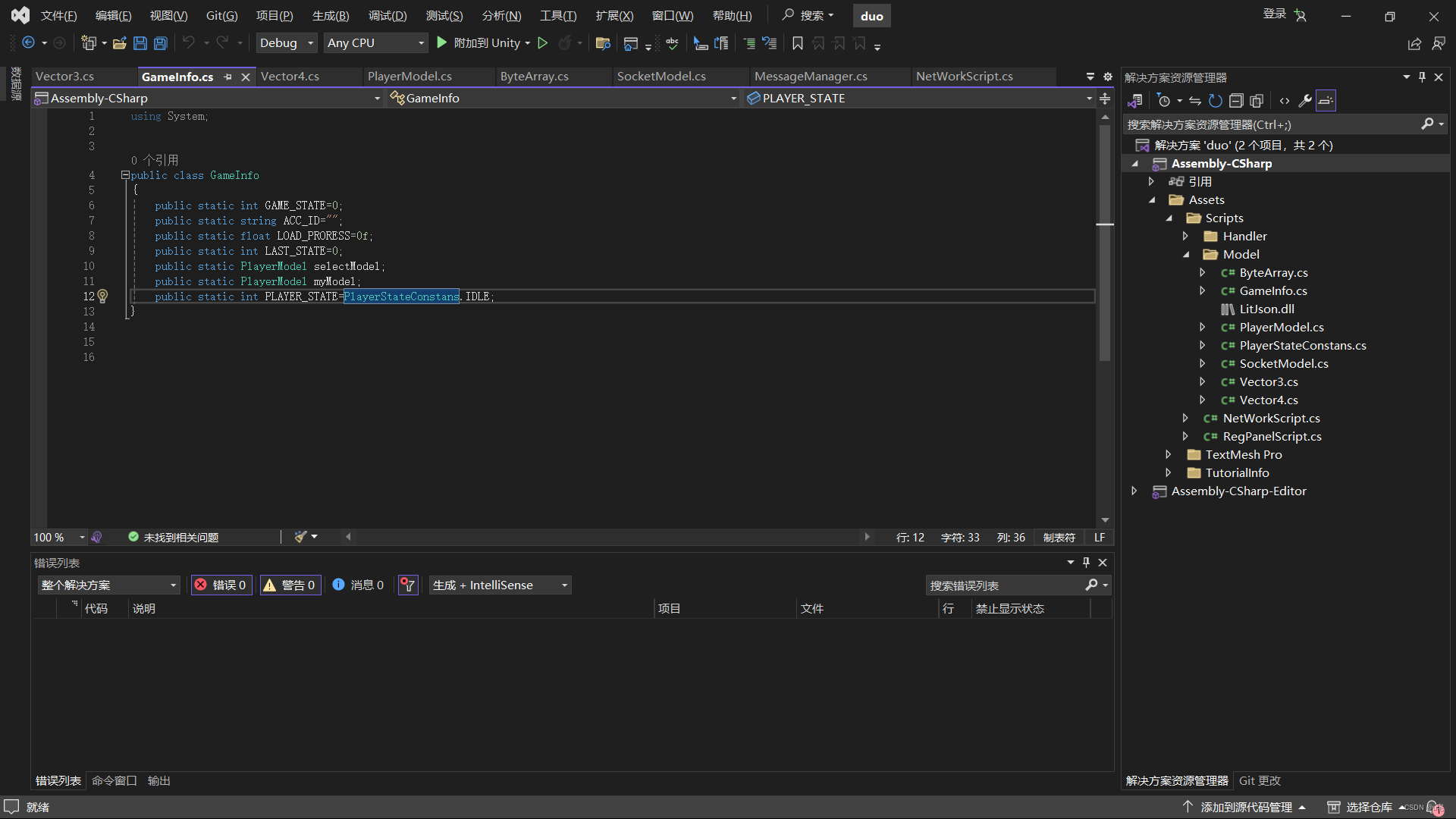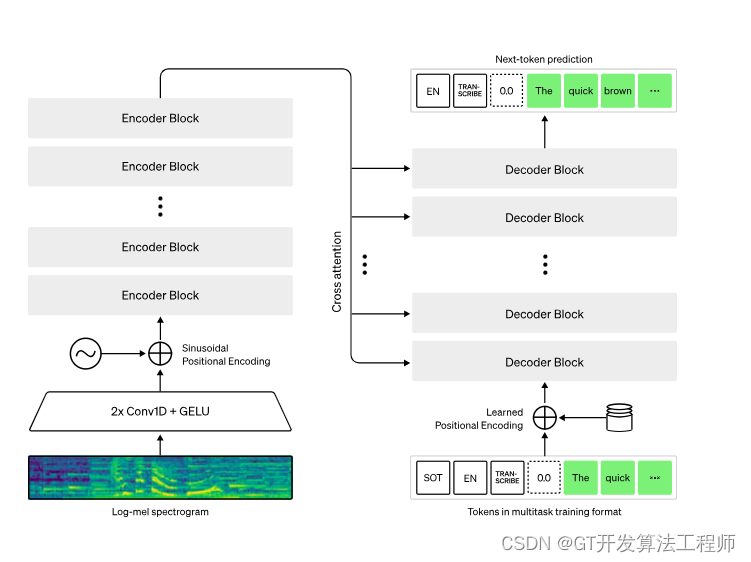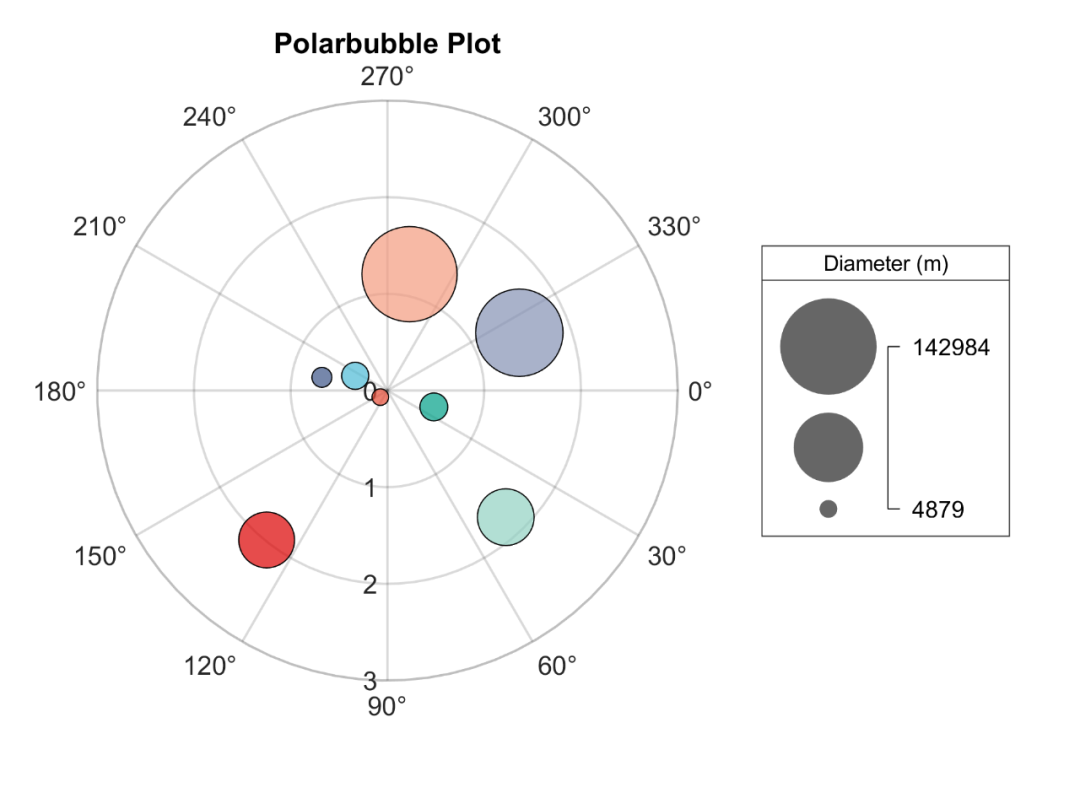Gin的HTML模板配置
1 )单一目录的配置
-
配置模板目录,在与main.go同级下, 新建目录,下面二选一,仅作举例, 这里选择 tpls
templatestpls
-
在 tpls 目录下新建 news.html
<!-- 最简单的 --> <h1>News Page</h1><h3>标题:{{.title}}</h3> <p>内容:{{.content}}</p>- 注意,这里加上define和end头尾也可以
{{ define "news.html" }} <h1>News Page</h1><h3>标题:{{.title}}</h3> <p>内容:{{.content}}</p> {{ end }}
- 注意,这里加上define和end头尾也可以
-
应用程序示例中配置
r.LoadHTMLGlob("tpls/*")通配设定r.LoadHTMLFiles("tpls/news.html")逐个指定,多个在字符串中用,分隔
程序示例
package mainimport ("net/http""github.com/gin-gonic/gin"
)var statusOK = http.StatusOKfunc main() {// 创建一个默认的路由引擎r := gin.Default()// 配置模板的文件r.LoadHTMLGlob("tpls/*")// r.LoadHTMLFiles("tpls/news.html") // 逐个指定多个需要使用逗号分隔// 根路由r.GET("/", func(c *gin.Context) {c.String(statusOK, "Welcome to %v", "Home Page")})r.GET("/news", func(c *gin.Context) {c.HTML(statusOK, "news.html", gin.H{"title": "新闻标题","content": "这是详细的新闻内容",})})r.Run()
}
2 )多目录配置
-
配置模板目录,在与main.go同级下, 新建目录 tpls, 在内部再创建两个目录: web, admin
tpls/webtpls/admin
-
新建 tpls/admin/news.html
{{ define "admin/news.html" }}<h1>News Page</h1><h3>标题:{{.title}}</h3> <p>内容:{{.content}}</p>{{ end }}- 这里内容和之前保持一致, 但要注意上下的定义
- 如果不添加,会出现
Error #01: html/template: "admin/news.html" is undefined的错误 - 这里的 define 和 end 非常重要
- define 配置的路径是匹配
c.HTML中的第二个参数
-
应用程序示例中配置
r.LoadHTMLGlob("tpls/**/*")通配设定r.LoadHTMLFiles("tpls/admin/news.html")逐个指定,多个在字符串中用,分隔
程序示例
package mainimport ("net/http""github.com/gin-gonic/gin"
)var statusOK = http.StatusOKfunc main() {// 创建一个默认的路由引擎r := gin.Default()// 配置模板的文件r.LoadHTMLGlob("tpls/**/*")// r.LoadHTMLFiles("tpls/admin/news.html") // 逐个指定多个需要使用逗号分隔// 根路由r.GET("/", func(c *gin.Context) {c.String(statusOK, "Welcome to %v", "Home Page")})r.GET("/admin/news", func(c *gin.Context) {c.HTML(statusOK, "admin/news.html", gin.H{"title": "新闻标题","content": "这是详细的新闻内容",})})r.Run()
}
3 )多层复杂目录配置
-
首先看下设定的结构
yourGinProject/ ······························· 根目录├── go.mod ·································· go mod 文件├── go.sum ·································· go sum 文件├── main.go ································· main 文件└── tpls ····································· html模板目录├── a│ └── b│ └── c│ └── d│ └── e│ └── news.html├── admin│ └── news.html│└── news.html-
tpls/news.html{{ define "news.html" }}<h1>News Page</h1><h3>标题:{{.title}}</h3> <p>内容:{{.content}}</p>{{ end }} -
tpls/admin/news.html{{ define "admin/news.html" }}<h1>News Page</h1><h3>标题:{{.title}}</h3> <p>内容:{{.content}}</p>{{ end }} -
tpls/a/b/c/d/e/news.html{{ define "a/b/c/d/e/news.html" }}<h1>News Page</h1><h3>标题:{{.title}}</h3> <p>内容:{{.content}}</p>{{ end }} -
注意各个 news.html 的define设定
-
程序示例
package mainimport ("net/http""github.com/gin-gonic/gin"
)var statusOK = http.StatusOKfunc main() {// 创建一个默认的路由引擎r := gin.Default()// 配置模板的文件r.LoadHTMLGlob("tpls/**/**/**/**/**/*")// 根路由r.GET("/", func(c *gin.Context) {c.String(statusOK, "Welcome to %v", "Home Page")})// 这个配置和紧挨着下面的配置一致,只是路由自己设定了一个简洁版的r.GET("/x/news", func(c *gin.Context) {c.HTML(statusOK, "a/b/c/d/e/news.html", gin.H{"title": "新闻标题","content": "这是详细的新闻内容",})})// 多层路由,同上r.GET("/a/b/c/d/e/news", func(c *gin.Context) {c.HTML(statusOK, "a/b/c/d/e/news.html", gin.H{"title": "新闻标题","content": "这是详细的新闻内容",})})// 二级r.GET("/admin/news", func(c *gin.Context) {// r.LoadHTMLGlob("tpls/**/*") // 这里会 panic 报错r.LoadHTMLFiles("tpls/admin/news.html") // 这里正常可以访问,权重会大于顶部的全局配置c.HTML(statusOK, "admin/news.html", gin.H{"title": "新闻标题","content": "这是详细的新闻内容",})})// 一级r.GET("/news", func(c *gin.Context) {// r.LoadHTMLGlob("tpls/*") // 这里会 panic 报错r.LoadHTMLFiles("tpls/news.html") // 这里正常可以访问,权重会大于顶部的全局配置c.HTML(statusOK, "news.html", gin.H{"title": "新闻标题","content": "这是详细的新闻内容",})})r.Run()
}
- 可以看到,在单个路由中
r.LoadHTMLFiles配置的用处了 - 所以,以上就比较麻烦,一般而言,在一开始设计模板的时候,就要约定好规则
- 特殊的设定只能应用于特殊的场景下
Gin的HTML模板语法
1 )基本渲染
主程序
package mainimport ("net/http""github.com/gin-gonic/gin"
)var statusOK = http.StatusOKtype User struct {Id intName stringHobby string
}func main() {// 创建一个默认的路由引擎r := gin.Default()// 配置模板的文件r.LoadHTMLGlob("tpls/*")// 根路由r.GET("/", func(c *gin.Context) {c.String(statusOK, "Welcome to %v", "Home Page")})r.GET("/user", func(c *gin.Context) {c.HTML(statusOK, "user.html", &User{Id: 1,Name: " Wang ", // 注意,这里有2个空格Hobby: "swimming",})})r.Run()
}
html模板
{{ define "user.html" }}<h1>User Page</h1><h3>用户Id:{{.Id}}</h3>
<!-- 下面这种也是注释 -->
{{/* 这里是姓名,本身数据存在空格,但是这个去空格的方式无法去除 */}}
<h3>用户姓名:{{- .Name -}}</h3>
<h3>用户爱好:{{.Hobby}}</h3>{{ $xId := .Id }}<h3>演示变量: {{- $xId -}} </h3>{{ end }}
{{ .x }}x是属性,基于这种方式来输出数据{{/* 这里是注释 */}}注意/*和*/紧贴着{{和}},可以多行,不可嵌套{{ $xId := .Id }}单独设定变量, 变量名只能使用一个${{- $xId -}}这种去除空格,只能去除周围的空格,无法去除属性内包含的空格,且-紧贴{{和}},同时与模板值之间需要使用空格分隔
效果图

2 ) 比较, 判断, range, with
主程序
package mainimport ("net/http""github.com/gin-gonic/gin"
)type Article struct {Title stringContent string
}var statusOK = http.StatusOKfunc main() {r := gin.Default()//加载模板 放在配置路由上面r.LoadHTMLGlob("tpls/**/*")//前台r.GET("/", func(c *gin.Context) {c.HTML(statusOK, "web/index.html", gin.H{"title": "首页","msg": " 我是msg","score": 89,"hobby": []string{"吃饭", "睡觉", "写代码"},"newsList": []interface{}{&Article{Title: "新闻标题1",Content: "新闻详情1",},&Article{Title: "新闻标题2",Content: "新闻详情2",},},"testSlice": []string{},"news": &Article{Title: "新闻标题",Content: "新闻内容",},})})r.Run()
}
html模板
{{ define "web/index.html" }}<h2>title变量展示: {{.title}}</h2><!-- 定义变量 -->
{{$t := .title}}<!-- 这里展示 title -->
<h4>这里通过变量,再次展现title: {{$t}}
</h4><!-- 条件判断 -->
<h4>这里基于判断,展示是否及格</h4>
{{if ge .score 60}}<p>及格</p>
{{else}}<p>不及格</p>
{{end}}<h4>这里基于判断,更加细度展示成绩</h4>{{if gt .score 90}}<p>优秀</p>
{{else if gt .score 80}}<p>良好</p>
{{else if gt .score 60}}<p>及格</p>
{{else}}<p>不及格</p>
{{end}}<!-- 循环遍历数据 -->
<h3>下面用range开始遍历 hobby 数组</h3>
<ul>{{range $key,$value:=.hobby}}<li>{{$key}}----{{$value}}</li>{{end}}
</ul><h3>下面用range开始遍历 新闻 数组</h3>
<ul>{{range $key,$value:=.newsList}}<li>{{$key}}----{{$value.Title}}---{{$value.Content}}</li>{{end}}
</ul><h3>下面用range遍历中,空数组场景的展示</h3>
<ul>{{range $key,$value:=.testSlice}}<li>{{$key}}----{{$value}}</li>{{else}}<li>数组中没有数据</li>{{end}}
</ul><!-- with 解构结构体 -->
<h3>不使用 with 结构属性</h3>
<p>{{.news.Title}}</p>
<p>{{.news.Content}}</p><h3>使用 with 结构属性</h3>
{{with .news}}<p>{{.Title}}</p><p>{{.Content}}</p>
{{end}}{{ end }}
- 关于比较函数中的一些注意事项
eq如果 arg1 == arg2 则返回真ne如果 arg1 != arg2 则返回真lt如果 arg1 < arg2 则返回真le如果 arg1 <= arg2 则返回真gt如果 arg1 > arg2 则返回真ge如果 arg1 >= arg2 则返回真
效果图

3 )高阶用法:预定义函数,自定义模板函数,嵌套模板
- 首先看下设定的结构
yourGinProject/ ······························· 根目录├── go.mod ·································· go mod 文件├── go.sum ·································· go sum 文件├── main.go ································· main 文件└── tpls ····································· html模板目录├── web│ └── index.html└── common└── page_header.html└── page_footer.html
主程序
package mainimport ("html/template""net/http""time""github.com/gin-gonic/gin"
)type Article struct {Title stringContent string
}var statusOK = http.StatusOK//时间戳转换成日期
func UnixToTime(timestamp int) string {t := time.Unix(int64(timestamp), 0)return t.Format("2006-01-02 15:04:05") // 这个是按照这个时间来进行格式化, 必须是这个时间点, 据说是go诞生之日
}func Println(str1 string, str2 string) string {return str1 + "----" + str2
}func main() {// 创建一个默认的路由引擎r := gin.Default()//自定义模板函数, 注意要把这个函数放在加载模板前r.SetFuncMap(template.FuncMap{"UnixToTime": UnixToTime,"Println": Println,})//加载模板 放在配置路由上面r.LoadHTMLGlob("tpls/**/*")// 前台r.GET("/", func(c *gin.Context) {c.HTML(statusOK, "web/index.html", gin.H{"title": "首页","titleEn": "homePage","msg": "demo","date": 1708344953,})})r.Run()
}
web/index.html模板
{{ define "web/index.html" }}<!-- 这里定义通用头部 -->{{template "common/page_header.html" .}}<h3>下面演示: 预定义函数</h3><!-- 预定义函数 -->{{ len .title }}<br />{{ len .titleEn }}<!-- 自定义模板函数 --><h3>下面演示: 自定义模板函数</h3>{{.date}}<br /><br />{{UnixToTime .date}}<br><br>{{Println .title .msg}}<!-- 这里定义通用尾部 -->{{template "common/page_footer.html" .}}{{ end }}
common/page_header.html模板
{{ define "common/page_header.html" }}<h3>我是一个公共的标题---{{.title}}</h3>
{{end}}
common/page_footer.html模板
{{ define "common/page_footer.html" }}<h3>我是一个公共的底部</h3>
{{end}}
-
在 预定义函数 中,执行模板时,函数从两个函数字典中查找
- 首先是模板函数字典,然后是全局函数字典。
- 一般不在模板内定义函数,而是使用 Funcs 方法添加函数到模板里
-
预定义的全局函数如下
and- 函数返回它的第一个 empty 参数或者最后一个参数
- 就是说"and x y"等价于"if x then y else x";所有参数都会执行
or- 返回第一个非 empty 参数或者最后一个参数
- 亦即"or x y"等价于"if x then x else y";所有参数都会执行
not- 返回它的单个参数的布尔值的否定
len- 返回它的参数的整数类型长度
index- 执行结果为第一个参数以剩下的参数为索引/键指向的值
- 如"index x 1 2 3"返回 x[1][2][3]的值;每个被索引的主体必须是数组、切片或者字典
print- 即 fmt.Sprint
printf- 即 fmt.Sprintf
println- 即 fmt.Sprintln
html- 返回与其参数的文本表示形式等效的转义 HTML
- 这个函数在 html/template 中不可用
urlquery- 以适合嵌入到网址查询中的形式返回其参数的文本表示的转义值
- 这个函数在 html/template 中不可用
js- 返回与其参数的文本表示形式等效的转义 JavaScript
call- 执行结果是调用第一个参数的返回值,该参数必须是函数类型,其余参数作为调用该函
数的参数 - 如"call .X.Y 1 2"等价于 go 语言里的 dot.X.Y(1, 2)
- 其中 Y 是函数类型的字段或者字典的值,或者其他类似情况
- call 的第一个参数的执行结果必须是函数类型的值(和预定义函数如 print 明显不同)
- 该函数类型值必须有 1 到 2 个返回值,如果有 2 个则后一个必须是 error 接口类型
- 如果有 2 个返回值的方法返回的 error 非 nil,模板执行会中断并返回给调用模板执行者该错误
- 执行结果是调用第一个参数的返回值,该参数必须是函数类型,其余参数作为调用该函
-
在自定义模板函数中,比如定义了
formatDate方法,有两种用法{{.now | formatDate}}或{{formatDate .now }}
-
在嵌套 template中,注意最后的点(.)
效果图
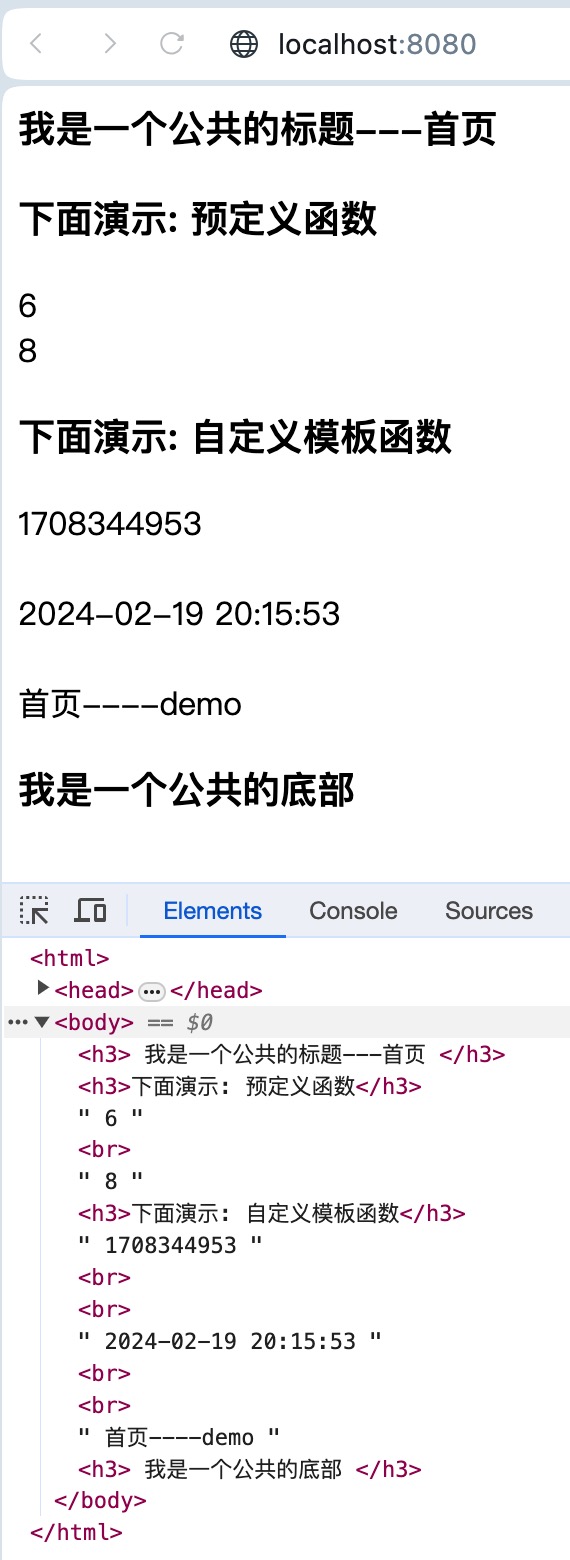
静态文件服务器的配置
这块比较简单
主程序
package mainimport ("net/http""github.com/gin-gonic/gin"
)var statusOK = http.StatusOKfunc main() {// 创建一个默认的路由引擎r := gin.Default()//配置静态web目录 第一个参数表示路由, 第二个参数表示映射的目录r.Static("/static", "./static")// 前台r.GET("/", func(c *gin.Context) {c.String(statusOK, "Welcome to %v", "Home Page")})r.Run()
}
- 这样就设定好了,在与 main.go 同级新建 static/images 目录,添加 mysql-logo.svg 图片
- 访问该图片: http://localhost:8080/static/images/mysql-logo.svg
- 其他的,如:css, js 这类也同样适用
- 这时候,静态文件服务器就搭建好了



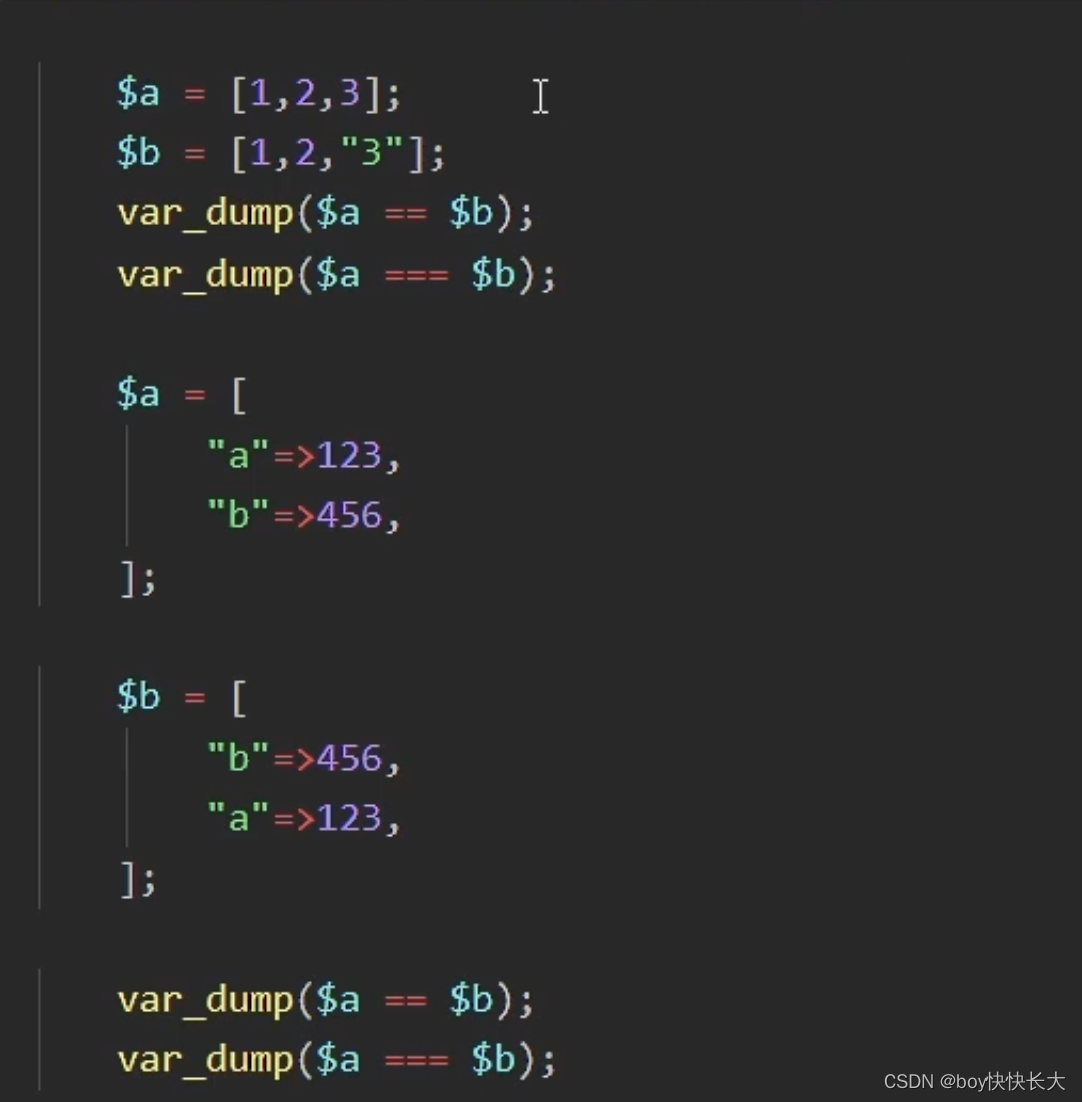


![[计算机网络]---Https协议](https://img-blog.csdnimg.cn/direct/85bf14fbb03f4966aefc4b1e362001cc.png)

